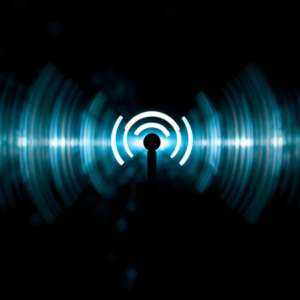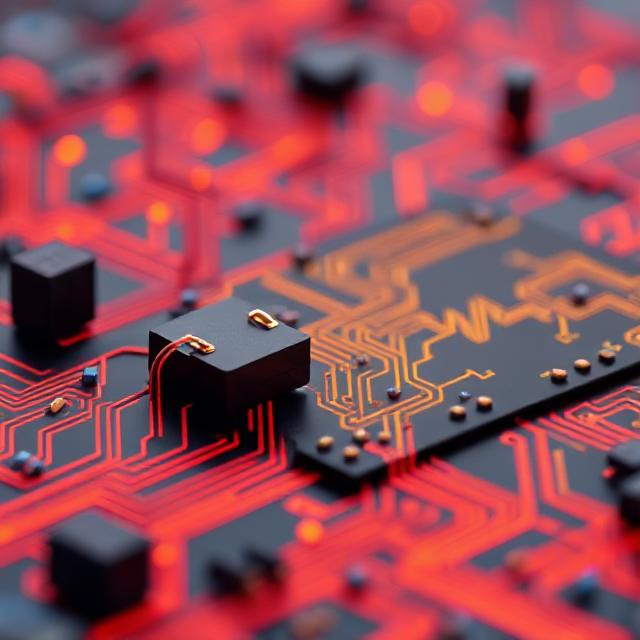What is Wireless Data Transmission?
Wireless data transmission is the process of sending information (like text, images, videos, or data) from one device to another without using wires. Instead of connecting devices with physical cables, wireless transmission uses electromagnetic waves (like radio waves, microwaves, or light waves) to send data through the air.

Key Wireless Data Transmission Methods:
- Radio Waves (Wi-Fi and Bluetooth):
- Wi-Fi: Wi-Fi is a common method used to send data over short to medium distances (like inside your home or office). It’s based on radio waves, just like how your radio plays music.
- How it works: Your device (like a laptop or phone) connects to a router using radio waves. The router is connected to the internet, so your device can send and receive data from the internet via these waves.
- Example: You use Wi-Fi to browse the internet on your phone or stream a movie on your laptop.
- Bluetooth: Bluetooth is used for very short-range communication, like between your phone and wireless headphones or a speaker.
- How it works: Bluetooth sends data over short distances (usually up to 100 meters or less) using low-power radio waves. It’s great for connecting devices that don’t need to be far apart.
- Example: Pairing your phone with a Bluetooth speaker to play music.
- Wi-Fi: Wi-Fi is a common method used to send data over short to medium distances (like inside your home or office). It’s based on radio waves, just like how your radio plays music.
- Cellular Networks (4G, 5G):
- 4G/5G: These are the networks used by your mobile phone to access the internet when you’re not connected to Wi-Fi. 4G is the older, slower version, while 5G is the newer, faster version.
- How it works: Cellular networks use radio towers to transmit data over long distances. Your phone communicates with the nearest tower, which then connects to the broader network to send and receive data.
- Example: When you check social media or stream a video on your phone using mobile data (without Wi-Fi), you’re using a 4G or 5G connection.
- 4G/5G: These are the networks used by your mobile phone to access the internet when you’re not connected to Wi-Fi. 4G is the older, slower version, while 5G is the newer, faster version.
- Microwaves (Satellite Communication):
- Microwaves are a type of radio wave but at a higher frequency. This method is often used for communication over long distances, especially when connecting far-off locations (like in satellite communication).
- How it works: Data is sent as microwave signals from one antenna to another, often through satellites orbiting the Earth. The satellite relays the data back down to Earth to another antenna.
- Example: Satellite TV or GPS systems use microwaves to send data between satellites and receivers on the ground.
- Microwaves are a type of radio wave but at a higher frequency. This method is often used for communication over long distances, especially when connecting far-off locations (like in satellite communication).
- Infrared (IR) Communication:
- Infrared uses light waves to transmit data over short distances, much like how a remote control works.
- How it works: Infrared communication uses infrared light (which is invisible to the human eye) to send data between devices. It’s typically line-of-sight, meaning the devices need to be facing each other and close together.
- Example: A TV remote control that uses infrared signals to change channels.
- Infrared uses light waves to transmit data over short distances, much like how a remote control works.
- Li-Fi (Light Fidelity):
- Li-Fi is a newer method of wireless transmission that uses light to send data.
- How it works: Data is sent using visible light, often from an LED lightbulb. Just like Wi-Fi uses radio waves, Li-Fi uses light waves to transmit data between devices.
- Example: Some offices or homes may have Li-Fi-enabled lamps that can connect devices to the internet just by being in the same room.
- Li-Fi is a newer method of wireless transmission that uses light to send data.
- Zigbee and Z-Wave:
- These are two wireless communication protocols used mainly for smart home devices like lights, thermostats, and security cameras.
- How it works: Both Zigbee and Z-Wave use short-range radio signals to create networks that allow devices to communicate with each other. They are used in low-power devices that don’t need high-speed internet.
- Example: A smart thermostat talking to a smart air conditioner to adjust the room temperature based on your preferences.
- These are two wireless communication protocols used mainly for smart home devices like lights, thermostats, and security cameras.
- Near Field Communication (NFC):
- NFC is a very short-range communication method, usually just a few centimeters.
- How it works: NFC uses radio waves to send tiny bits of data between devices when they are very close to each other (like when you tap your phone on a payment terminal).
- Example: Using your phone to make a payment by tapping it near a point-of-sale terminal.
- NFC is a very short-range communication method, usually just a few centimeters.
Comparing the Methods:
| Method | Range | Speed | Common Use Case |
|---|---|---|---|
| Wi-Fi | Medium (home/office) | High | Internet access, streaming, browsing |
| Bluetooth | Short (up to 100m) | Low to medium | Connecting headphones, speakers, devices |
| Cellular Networks (4G/5G) | Long (city-wide) | High | Mobile internet, calls, data usage |
| Microwaves | Very long (satellite) | High | Satellite communication, GPS |
| Infrared (IR) | Very short (line-of-sight) | Low | TV remotes, device control |
| Li-Fi | Very short (room-sized) | Very high | High-speed internet in offices or homes |
| Zigbee/Z-Wave | Short (within a home) | Low | Smart home devices, automation |
| NFC | Very short (few cm) | Low | Contactless payments, ticketing |
Why Wireless Transmission?
- No Cables Needed: Wireless transmission eliminates the need for physical cables, making it more flexible and convenient.
- Mobility: It lets you access data on the go, whether you’re moving around the house, traveling, or just away from home.
- Convenience: Wireless communication allows for easy connections between devices without worrying about tangled wires or installation hassles.
Summary:
Wireless data transmission is all about sending information through the air using radio waves, light, or other signals, instead of physical wires. There are several methods, each suited to different situations, from your Wi-Fi at home to Bluetooth for connecting devices, or even satellites that use microwaves to send data over long distances.











